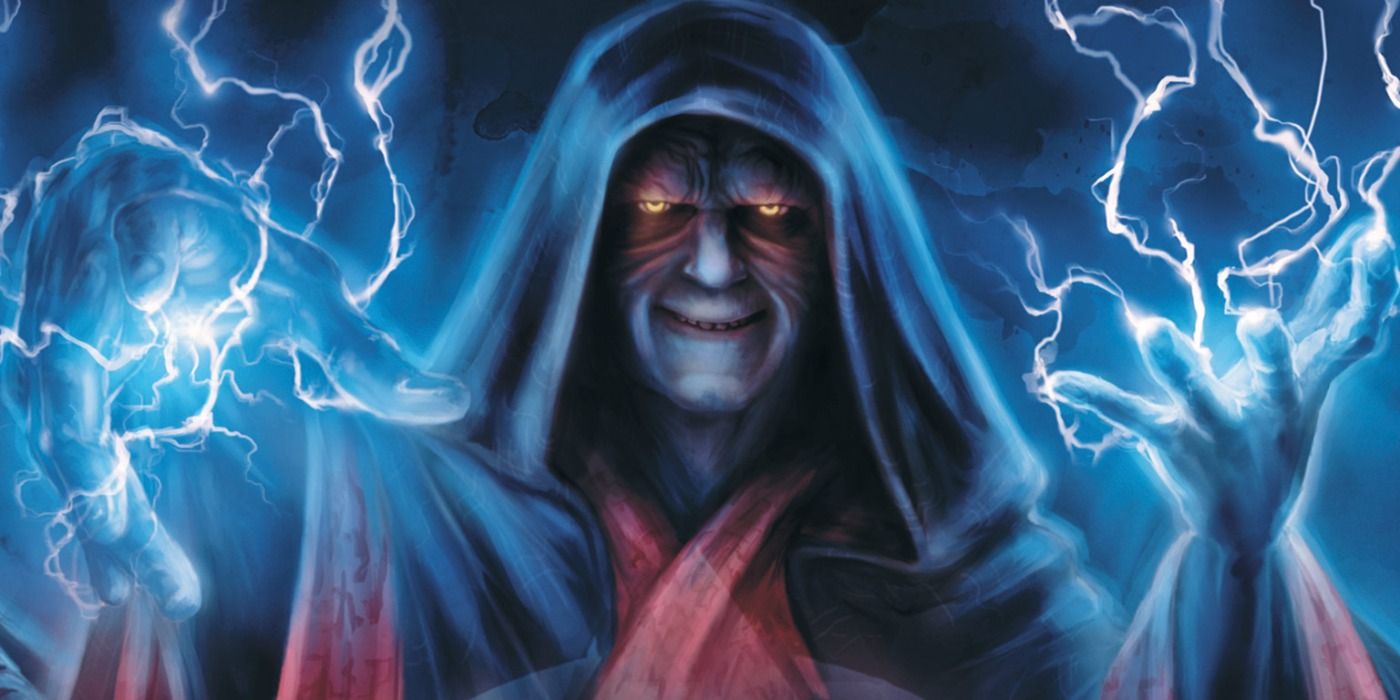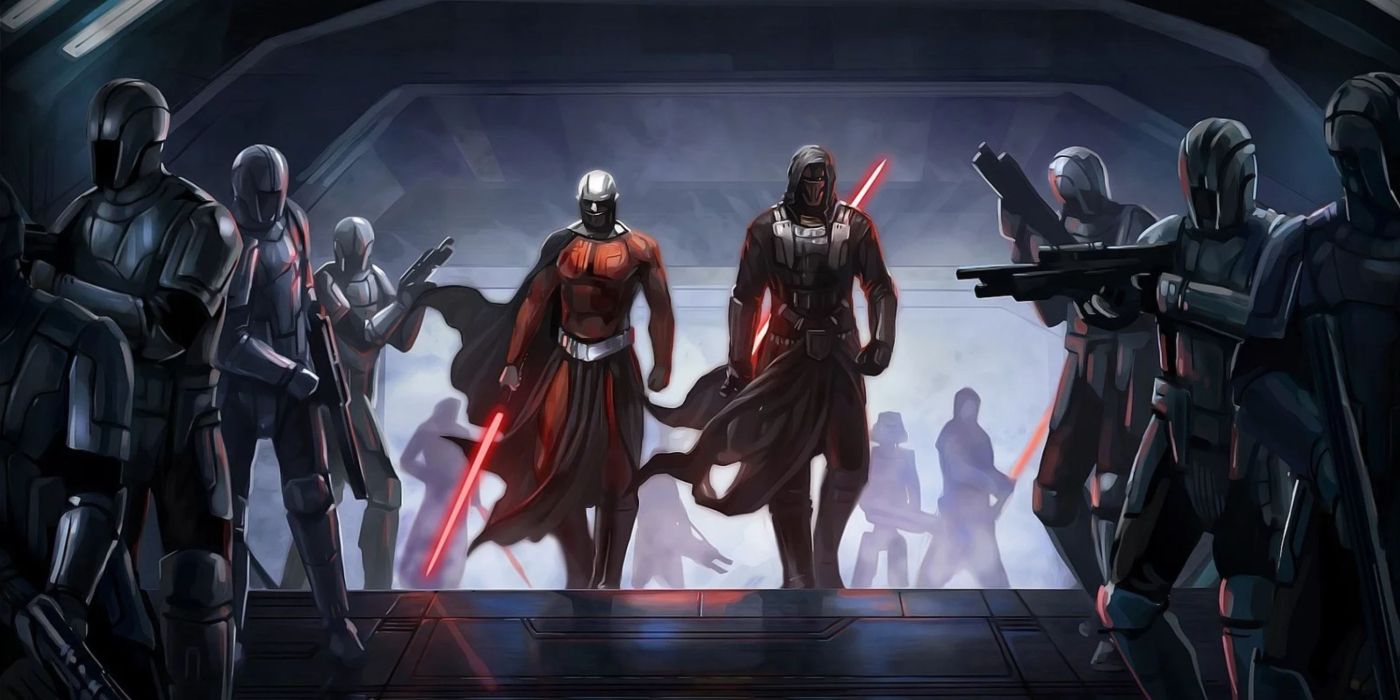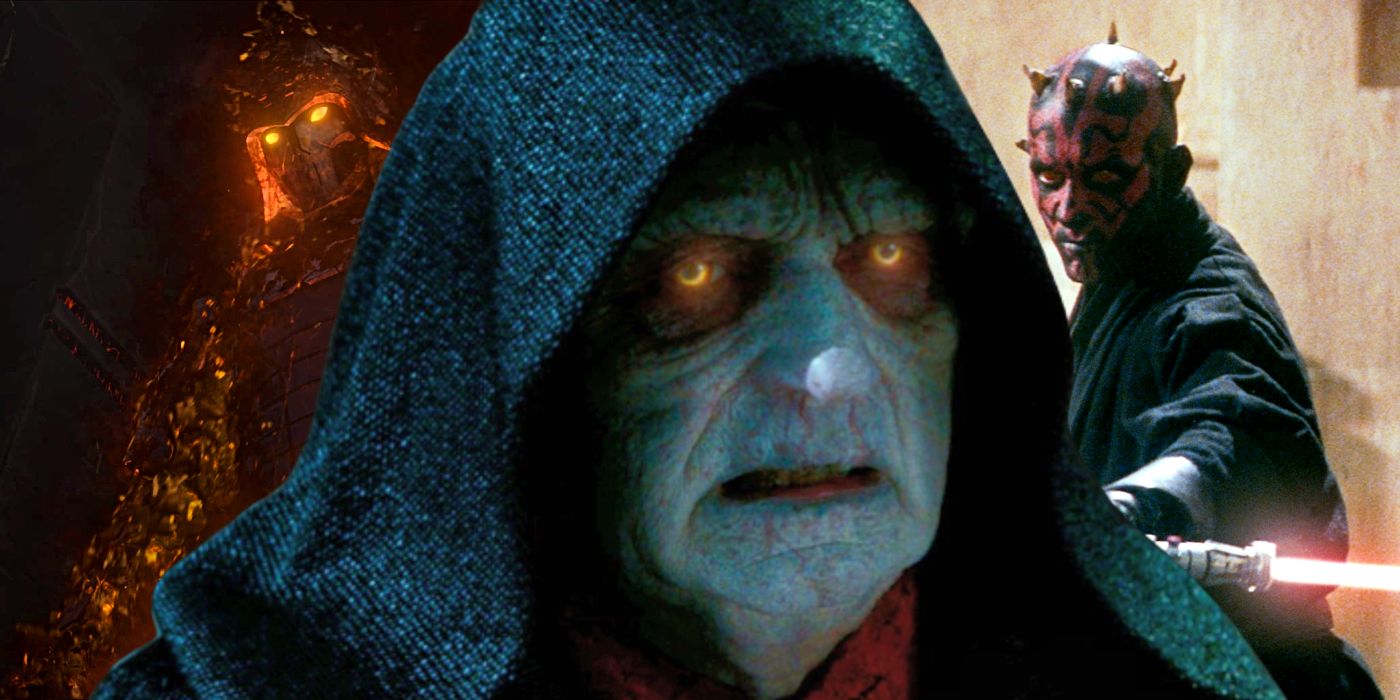Star Wars’ Sith Code Origin, Meaning & Canon History Explained
Created as part of the old KOTOR games, the Sith Code is still part of Disney’s Star Wars canon. Here’s everything you need to know about it.
You Are Reading :Star Wars Sith Code Origin Meaning & Canon History Explained

The Sith Code may have originated in the old Star Wars Expanded Universe, but it’s a firmly established part of the Disney canon as well; here’s everything to know about it. The Jedi may be the heroes of Star Wars, but the dark side has always held a certain degree of fascination for viewers. In part it’s because the Sith are so secretive, so mysterious and enigmatic, operating in the shadows and concealing their very existence for millennia. The Sith Rule of Two effectively means only two beings in the entire galaxy know the secrets of the Sith at any one time; what’s more, each apprentice slays their master as part of their ascension, meaning so much has probably been lost in the mists of time.
Still, as the Disney canon expands, it means a lot of details are being explored – especially after Star Wars: The Rise of Skywalker, which introduced a group of Sith cultists whose very existence appeared to contradict the Rule of Two. That’s led to multiple tie-ins attempting to straighten out continuity, and the most impressive of these is the recently published book Secrets of the Sith. Ostensibly written by Emperor Palpatine himself shortly before his final defeat on the planet Exegol, it’s a collection of Sith lore that even reveals the Sith’s origins as a rogue faction of Jedi.
The Sith Code is one of the most fascinating aspects of Star Wars lore, a window into their overall philosophy and a perfect illustration of the difference between the Sith and the Jedi. Its most famous version states
“Peace is a lie. There is only Passion.
Through Passion, I gain Strength.
Through Strength, I gain Power.
Through Power, I gain Victory.
Through Victory my chains are Broken.
The Force shall free me.”
Here’s the full history of the Sith Code, as well as its dark meaning.
The Origin of the Sith Code

Although George Lucas defined Darth Vader as “Lord of the Sith,” for decades he was reluctant to confirm just what the Sith were; in fact, when legendary Star Wars writer Timothy Zahn wrote his Thrawn trilogy, effectively launching the old Expanded Universe, he approached Lucasfilm with the idea the Sith were an alien race who had been conquered by Vader. The truth, of course, was very different, and Lucas’ own vision of the Sith began to emerge on the big screen in the prequel trilogy in the late ’90s and early 2000s.
The Sith Code wasn’t fashioned by George Lucas, though; it was actually the brainchild of David Gaider, one of the writers who worked on the classic Star Wars: Knights of the Old Republic games. These take place thousands of years before the events of Star Wars: Episode I – The Phantom Menace, predating the Rule of Two, at a time the Sith Empire was a powerful galactic force. Gaider approached Lucasfilm for guidance on Sith culture and philosophy, but realized they genuinely didn’t know have any answers. Recognizing the Nazi imagery inherent in the Empire and the Sith, he turned to the pages of Adolf Hitler’s Mein Kampf, and created a society centered purely upon strength and power. The Sith Code – intended as an inversion of the Jedi Code, a deliberate contrast between the two Force groups – lay at the center of the Sith culture he created. It became a unifying concept that ran through all the Star Wars tie-ins dealing with the Sith, and even Star Wars: The Clone Wars referenced it subtly, with Darth Maul complaining, “Through victory my chains are broken. The chains. The chains are the easy part. It’s what goes on in [the heart] that’s hard.”
The Sith Code was fully incorporated into the Disney canon in Greg Rucka’s novel Guardians of the Whills, which featured key quotes from different Force traditions, including the Sith. It referred to the Code of the Sith as the Qotsisajak, firmly establishing it as part of galactic history in the new canon. It’s since been referenced in other tie-ins as well, confirming its significance to the Sith, including in Lucasfilm’s recently-published Secrets of the Sith.
The Meaning of the Sith Code

The Sith Code is designed to stand in contrast with that of the Jedi. That very fact is significant, because – although the Sith themselves would not recognize it – it indicates the Sith are defined by what they are not, rather than what they are. It begins with the declaration “Peace is a lie. There is only Passion.” This one sentence immediately differentiates the Sith from the Jedi, because Jedi seek serenity through selflessness, whereas Sith embrace their darkest emotions and use them as fuel for the dark side. This is best illustrated through the debate about attachment; the Jedi reject attachment because they consider it a self-interested emotion, whereas the Sith celebrate it because they believe it to be the only form of love that benefits an individual. There is a possessiveness about attachment that makes it inherently dark in nature, and thus attractive to Sith.
Emotions are valuable not for their own sake, but because they lead to strength – and then to power. The Sith believe anger, hatred, lust, pride, and all those other dark emotions make a being strong, and Sith Lords and Masters are encouraged to indulge them in the pursuit of power. Ironically, even Palpatine’s own notes admit this was the reason the Sith Empire collapsed; each Sith is self-focused, interested only in their own status and power, competing against all others. The Sith may have been waging war against the Jedi, but they were defeated when their innate self-interest caused the various Sith to turn upon one another. Even Palpatine unwittingly repeated a variation of this folly, because in his pride he neglected the Rule of Two, meaning the line of the Sith ended at Exegol.
The Sith believe power is the only way to gain victory – over their own hearts, and over the forces that oppose them. “Through Victory my chains are Broken,” the Sith declare. Followers of the Sith Code consider themselves freed by their self-interest – freed from their own inhibitions, from the constraints of society that would hold them down, and from what they regard as the foolishness of the light side of the Force. Again, there is a dark irony in the fact so many adherents of the Sith Code do not find the freedom they seek; as powerful as Darth Vader may have been, his fall to the dark side led to his becoming trapped in a suit of armor for decades, tortured by a lost love. Meanwhile, it’s notable Palpatine did not even try to persuade Ben Solo of the rightness of the Sith Code; in truth, Kylo Ren found the dark side a prison, one of the Emperor’s making. Palpatine, interested only in his own power, would naturally never have noticed the conflict between the Sith philosophy and the reality that came about through following the dark side.
Perhaps the most interesting contrast between the Jedi and Sith Codes is the fact the Sith version ends with a first-person statement. That’s neatly symbolic, because a Jedi is supposed to be selfless, and by the time they’ve applied the previous lines of the Jedi Code to their lives they should have lost all sense of self-absorption. It’s not difficult to imagine the Jedi reciting their Code as a community, bound together by the philosophy it represents. In contrast, every Sith is encouraged to become utterly self-absorbed, and thus the Sith Code ends with a call for its adherents to apply it to their own lives and experiences, rejecting any sense of community or togetherness. That first-person statement represents the crucial difference between the two greatest Star Wars Force traditions.
Link Source : https://screenrant.com/star-wars-sith-code-origin-meaning-canon-explained/
